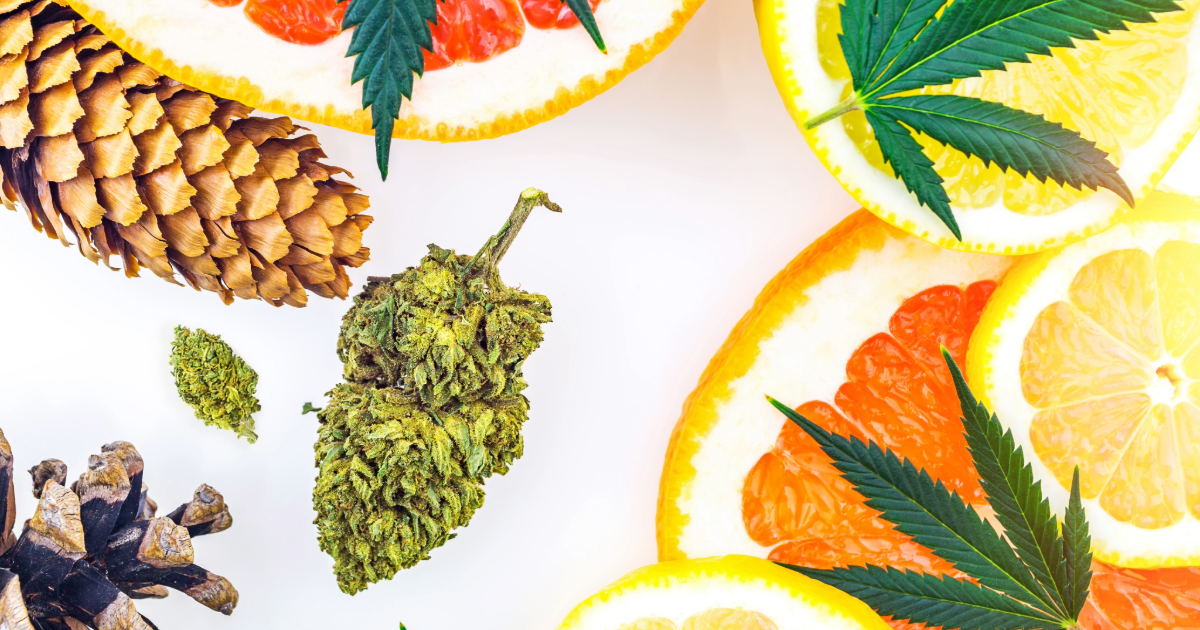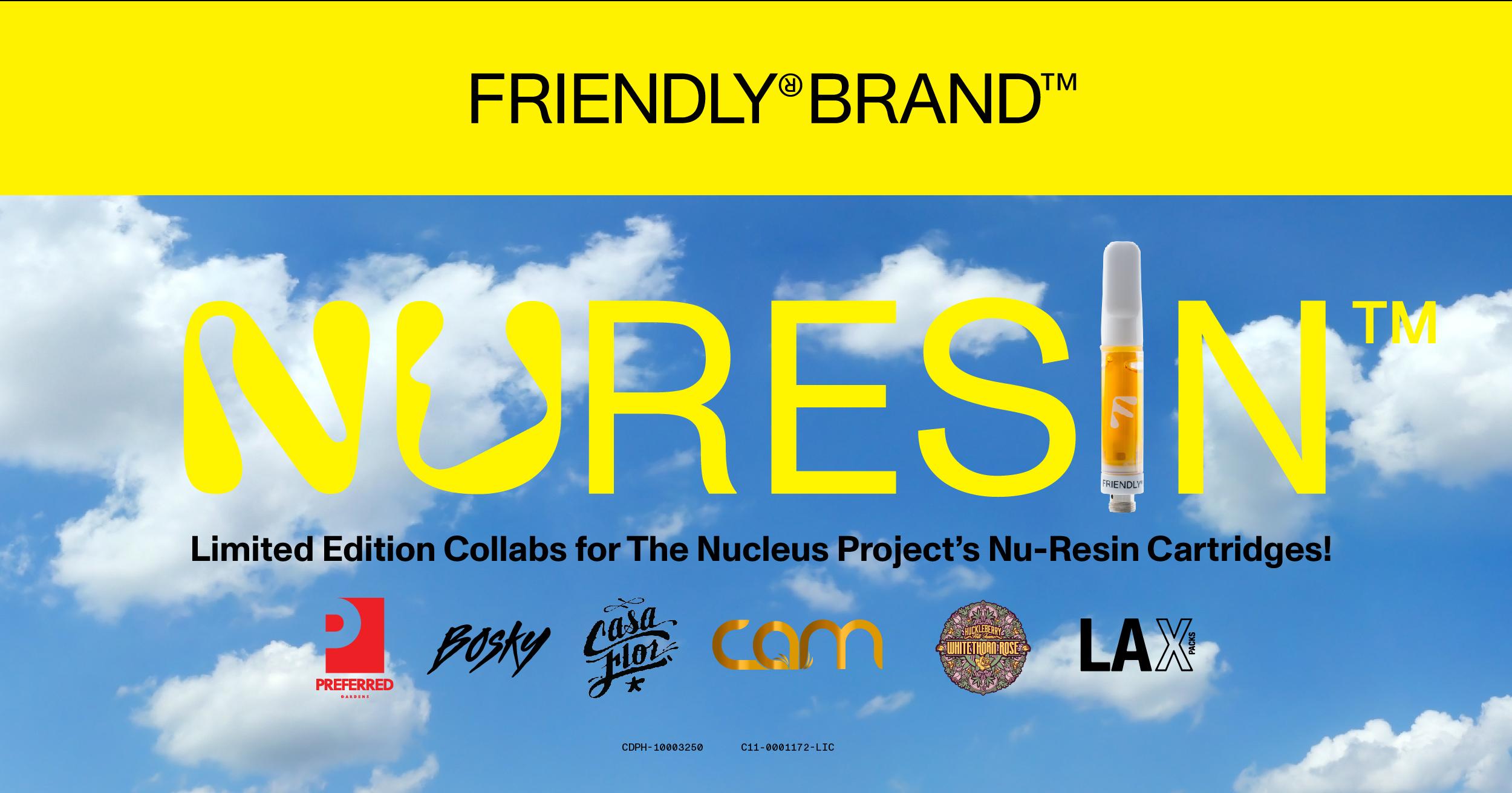Cannabis Flavors, Effects & Friendly's Nucleus Project
Friendly Brand has unlocked the natural flavor profile of your favorite strains from cultivators in California offering a kaleidoscope of pure, unadulterated taste. Their streamlined process minimizes exposure to elements, ensuring the essence of freshly harvested flower is captured in every inhale. It’s as if the flower was picked and extracted instantly.
Ever wonder why you like certain flavors of cannabis? It could be your body responding to different compounds in the plant including how you respond to effects that you like or need. The flavors or specific chemical profiles of cannabis strains can influence the overall experience and effects due to the presence of various cannabinoids, terpenes, and flavonoids.
Here’s how these components influence the effects of cannabis, and how they work together in our bodies that is specific to each person. We will also introduce you to Friendly's most flavorful innovation yet – The Nucleus Project!
What are Terpenes?
Terpenes are aromatic compounds found in many plants, including cannabis. They contribute to the flavor and scent profile of each cannabis strain. More importantly, terpenes can interact with cannabinoids like THC (tetrahydrocannabinol) and CBD (cannabidiol), potentially modifying their effects. For example:
- Linalool: Found in lavender, it may have calming and relaxing effects.
- Pinene: The most common terpene, also found in pine needles, is purported to aid with temporary pain relief.
- Myrcene: Known for its potential sedative properties, it might enhance the "couch-lock" effect.
- Limonene: Citrusy and uplifting, it may provide mood-enhancing effects.

Did you know that Friendly Brand products are made with cannabis strains from local cultivators that are carefully selected for their unique terpene profiles?
What are Cannabinoids?
Cannabinoids are a group of chemical compounds that are primarily found in the cannabis plant. They interact with the endocannabinoid system (ECS) in our bodies to trigger specific effects (keep reading to learn about the ECS).
The most well-known and studied cannabinoids produced by the cannabis plant include:
THC (Delta-9-Tetrahydrocannabinol): THC is the primary psychoactive compound in cannabis. It binds to cannabinoid receptors (CB1 and CB2), primarily CB1 in the brain, producing the characteristic “high” or euphoric effect associated with cannabis use.
CBD (Cannabidiol): CBD is another major cannabinoid found in cannabis. Unlike THC, CBD is not considered psychoactive and does not typically produce a high. It interacts with various receptors and neurotransmitter systems, contributing to its potential therapeutic effects.
CBG (Cannabigerol), CBC (Cannabichromene), CBN (Cannabinol), THCV (Tetrahydrocannabivarin), etc.: These are other lesser-known cannabinoids found in cannabis, each with potential therapeutic properties and interactions with the ECS.
The ratio and concentration of cannabinoids (like THC and CBD) in a cannabis strain may also influence its effects. For instance:
- THC-dominant: Strains high in THC might produce euphoria, relaxation, and sometimes increased appetite.
- CBD-dominant: Strains with higher CBD levels are often associated with relaxation without the psychoactive "high."
Endocannabinoids
These cannabinoids are produced naturally within the body (endogenously). Anandamide (AEA) and 2-Arachidonoylglycerol (2-AG) are the most studied endocannabinoids. They act as signaling molecules within the ECS to regulate various body processes.
Synthetic Cannabinoids
These are cannabinoids synthesized artificially in laboratories. They are often developed for research purposes.
What are Flavonoids?
Flavonoids are plant compounds that contribute to the flavor and color of cannabis. They play an important role in how you perceive the plant with your senses because of the pigment and flavor they provide.
Entourage Effect
The entourage effect is the synergistic interaction between cannabinoids, terpenes, and other compounds in cannabis. The combined effect of these components can result in a unique experience for each strain. For example:
A strain with high levels of both THC and myrcene might produce a strong sedative effect due to their combined action.
Endocannabinoid System
Explaining all these compounds in cannabis and interactions in our bodies isn’t complete without talking about our endocannabinoid system (ECS) discovered in the 1990s. The ECS is a complex biological system found in all vertebrate animals, including humans. It plays a crucial role in regulating a variety of physiological processes and maintaining homeostasis (balance) within the body. While everyone has an ECS the way our body processes cannabis is unique to each individual. Here are the key components and functions of the endocannabinoid system.
Cannabinoid Receptors
CB1 Receptors: Predominantly found in the central nervous system (brain and spinal cord) but also in various peripheral tissues.
CB2 Receptors: Mainly found in the peripheral nervous system, especially in immune cells and other tissues like the spleen and gastrointestinal tract.

Endocannabinoid System and Cannabinoids
Cannabinoids, such as THC (tetrahydrocannabinol) and CBD (cannabidiol) from cannabis plants, interact with the ECS by mimicking or modulating the effects of endocannabinoids. THC, for example, binds directly to CB1 and CB2 receptors, producing psychoactive effects and influencing various physiological processes.
Flavors And Your Cannabis Experience
In summary, the flavors of cannabis strains are indicative of their chemical composition, which includes cannabinoids, terpenes, and flavonoids. Each component can influence the overall effects and experience when consumed, making the selection of strains based on flavor profiles a way to potentially tailor the cannabis experience to your desired outcomes. Importantly, since our responses to cannabis vary depending on our body and experience with it, it’s always best to start with a low dose and go slow before consuming more.
The Nucleus Project
Friendly Brand is revolutionizing natural purity and potency of cannabis. They do this by unlocking the natural flavor profile and therefore the effects of your favorite strains like no other cannabis oil. They’ve redefined the standard for high-quality cannabis extracts with their cutting-edge technology, preserving the full spectrum of cannabinoids and terpenes for the most authentic cannabis experience on the planet.

Unlike conventional methods that degrade beneficial compounds, Friendly's proprietary process retains the “essence of the plant,” delivering unadulterated, pure cannabis oil by pulling a higher percentage of different terpenes and cannabinoids which is what contributes to the uniqueness of the flavor profiles achieved from extraction. In other words, their process unlocks a “treasure trove” of cannabinoids and terpenes that other methods miss, offering a richer, fresher, more complete cannabis experience.
Discover the essence of full spectrum cannabis unmatched in flavor and potency elevated in industry leading hardware for high-quality vaping. And it’s brought to you by the same company that introduced the first live resin vape on the legal market, so you know it’s going to be good!
DISCLAIMER: THIS SITE DOES NOT PROVIDE MEDICAL ADVICE.
All information, including but not limited to, text, graphics, images and other materials contained on this site are for informational purposes only. No text, graphics, images or other materials on this site are intended to be professional medical advice or a substitute for professional medical advice, diagnosis or treatment. Always seek the advice of your physician or other qualified health care provider with any questions you may have regarding a medical condition or treatment and before undertaking a new health care regimen, and never disregard professional medical advice or delay in seeking professional medical advice because of something you have viewed on this site.